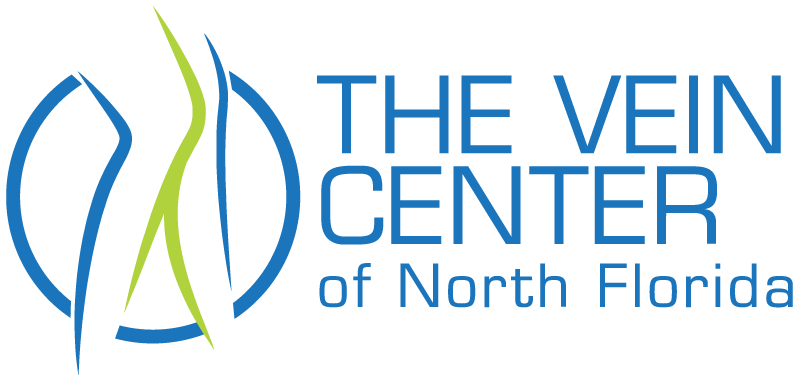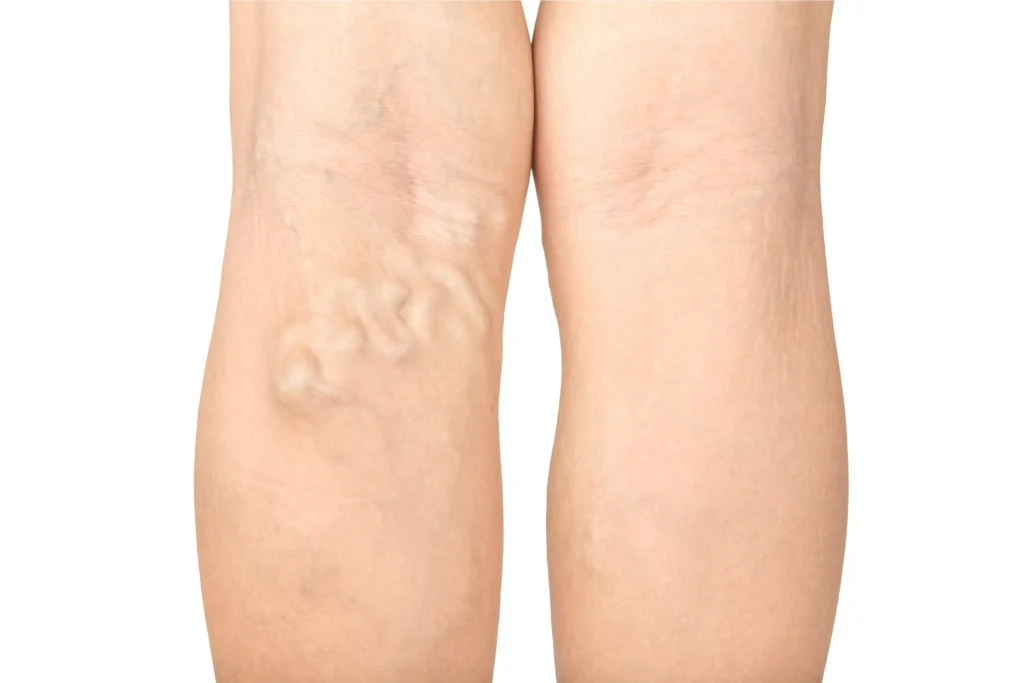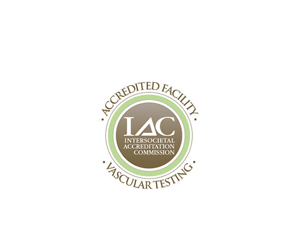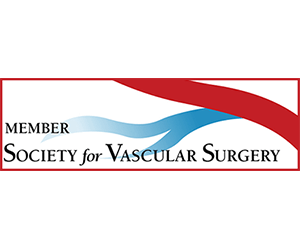Table of Contents
Varicose veins, also known as venous insufficiency, are enlarged, twisted veins commonly found in the legs and pelvis. Varicose veins are caused by malfunctioning valves in the veins that fail to regulate blood flow properly. Instead of moving blood towards the heart, these faulty valves allow blood to pool in the veins, leading to increased pressure and swelling.
Symptoms of Varicose Veins
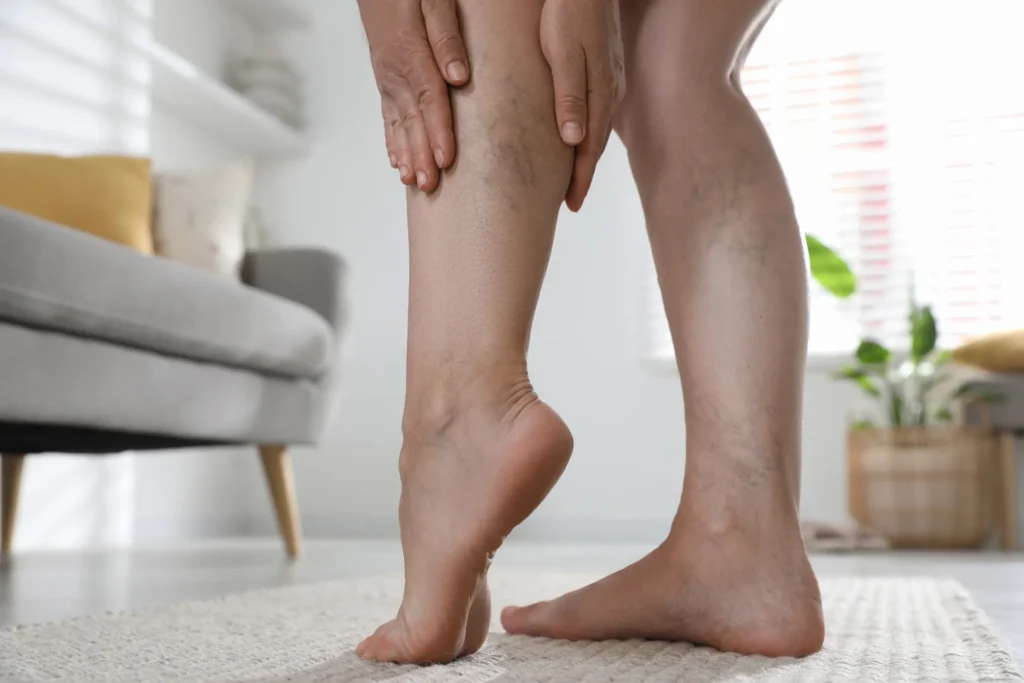 Varicose veins can cause a variety of symptoms, including:
Varicose veins can cause a variety of symptoms, including:
- Leg pain, aching, or cramping
- Swelling of the feet and ankles
- Itching
- Darkening of the skin around the affected veins
- Heavy or fatigued legs
- Skin wounds or ulcers
The veins may break open in severe cases, and ulcers can develop on the skin.
Who Is at Risk for Varicose Veins?
Varicose veins can affect a wide range of individuals, and several factors can increase the likelihood of developing them, including:
- Family history of varicose veins
- Aging
- Female gender
- Pregnancy
- Being overweight or obese
- Jobs that require long periods of standing
- Previous leg trauma
Women, especially those who have had multiple pregnancies and individuals with a family history of venous insufficiency, are at higher risk for developing varicose veins.
Treatment for Varicose Veins
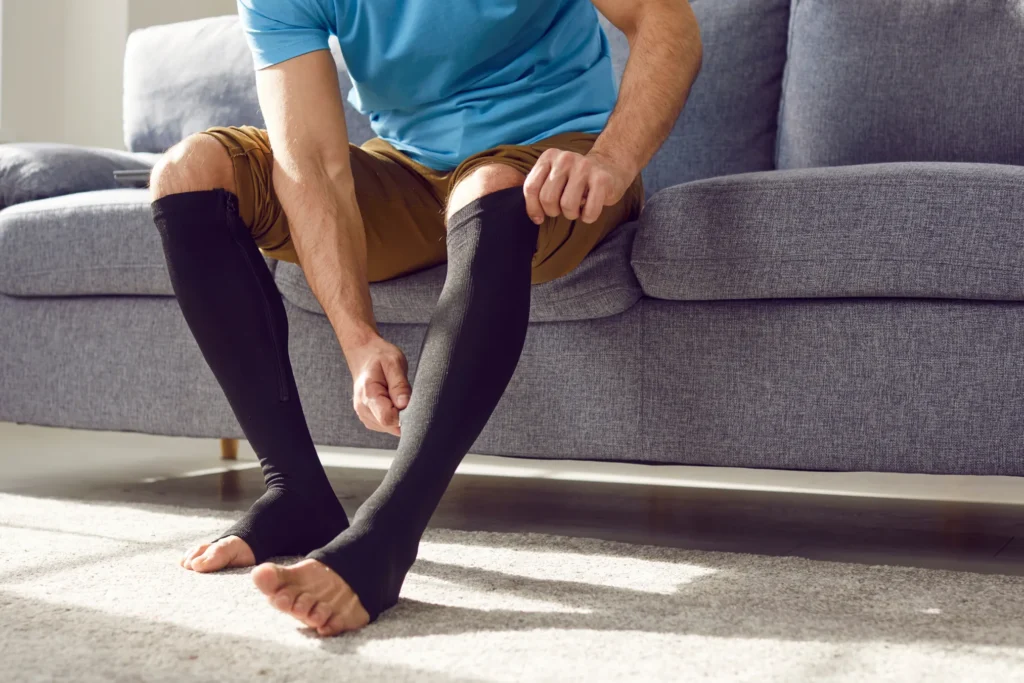 If varicose veins are not causing discomfort, treatment may not be necessary. However, if symptoms are present or if there are concerns about the veins’ appearance, various treatment options are available. A consultation with a vascular surgeon, including a physical exam and medical history review, will help determine the best treatment approach.
If varicose veins are not causing discomfort, treatment may not be necessary. However, if symptoms are present or if there are concerns about the veins’ appearance, various treatment options are available. A consultation with a vascular surgeon, including a physical exam and medical history review, will help determine the best treatment approach.
Treatment options include:
- Lifestyle changes: Exercise, weight loss, and avoiding tight clothing or high heels
- Leg compression: Wearing compression stockings to improve circulation
- Minimally invasive procedures: Injections, laser treatments, and ablation therapy.
- Surgical removal: In some cases, veins may need to be surgically removed.
Most procedures in the office take about an hour.
Recovery and Prevention for Varicose Veins
Recovery after varicose vein treatment is generally quick. Depending on the type of procedure performed, patients can usually return to work within a day or two. Compression stockings are often recommended during recovery to enhance healing and prevent new varicose veins from forming.
Preventive measures include:
- Maintaining a healthy weight
- Regular exercise to improve muscle tone
- Staying hydrated
- Avoiding prolonged sitting or standing
- Elevating the legs when resting
Varicose veins can be more than just a cosmetic issue—they can lead to discomfort, pain, and other complications. Understanding the risk factors and available treatments is essential for managing this condition. With a range of minimally invasive options and effective prevention strategies, you can take steps to relieve symptoms and improve your quality of life.
If you’re concerned about varicose veins, consulting with a vascular surgeon is the first step toward finding the right solution for your needs.
